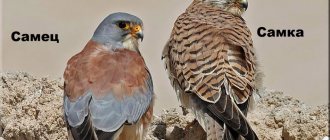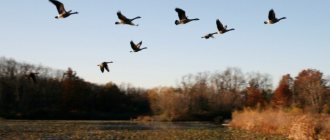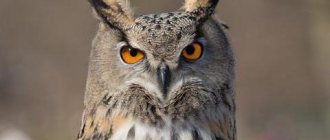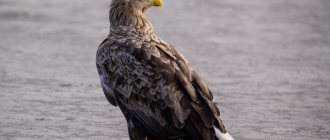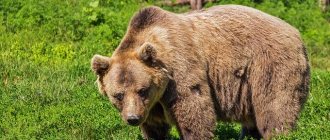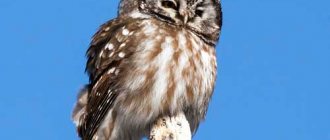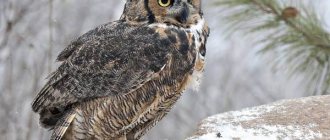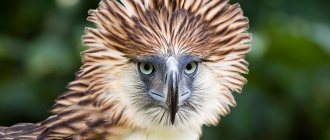For the full cycle of life on our planet, the presence of birds of prey in nature is an obvious necessity. Different species of birds have a natural ability to hunt large prey. Among them: hawks, representatives of eagle and falcon orders, seagulls, owls and others. The unifying criteria for these types are:
- the role occupied in the natural chain;
- way of eating;
- lifestyle (time of day at which the bird begins to hunt).
Bald Eagle
The main food of the predator is small mammals, fish and carrion. Mainly hunts in the morning. It lives in Canada, the USA, the island of Miquelon and the island of Saint-Pierre.
Nutrition
Most predators live up to their name - they feed on a wide variety of vertebrates, which they actively seek out with the help of acute vision and catch by plunging sharp claws into their prey. But among them there are also lovers of mollusks, insects, carrion and even... fruits. Thus, the bearded vulture is not averse to eating bones and... hooves, the slug-eating kite cannot live without snails, and the diet of the African vulture eagle includes something like a fish salad with crabs and... oil palm fruits. Some of the diurnal predators are almost omnivorous, while others feed mainly on one type of prey: insects (buzzards), fish (osprey) or reptiles (snake eaters).
Philippine eagle (or Philippine monkey-eater, or Philippine harpy)
It is the national symbol of the Philippines. One of the rarest, largest and strongest birds on our planet. Attacks monkeys, woolly wings and small mammals. The species is listed in the International Red Book as critically endangered. Protected by local authorities.
Andean condor
The Andean condor is considered the magnificent and largest representative of birds of prey. Its weight reaches 15 kg, and its wings open up to 3 meters. If you measure the bird's body in length, the result will be from 110 to 130 cm.
Andean condor
The condor is as elegant as a piano - the plumage of the body is completely black and shiny. The wings are edged with white feathers and there is a magnificent white frill on the neck. The dandy's head is completely devoid of feathers, and the male has a scarlet comb and “earrings”. Males are much larger than females, which is not typical for birds of prey. The eyes of the stronger sex are light brown, while those of females are red.
Condors live in the highlands of the Andes, sometimes 3-5 thousand kilometers above sea level. The main habitat is Latin America. They climbed so high because the view from the tops is better and, taking flight from a height, the birds catch the rising air currents. This helps to glide over the ground for a long time.
In search of food, the condor flies up to 200 km. It feeds on carrion - dead deer, cows, sheep. The bird can go without food for up to 7 days. Having found the carcass of a dead animal, it gorges itself so much that for several hours it cannot rise to the wing. During prolonged starvation, it destroys the nests of birds nesting in the neighborhood.
The Andean condor chooses a mate only once in its life. The couple lives together until their death. Life expectancy is 50 years. A pair of condors nests in inaccessible rocks and builds nests there. The female carries 1-2 eggs. The couple takes turns incubating them.
Andean condor attacks a wolf
An interesting point is that if an egg disappears somewhere, the female will immediately lay another one. This fact is used by ornithologists to breed birds using an incubator.
Condor numbers have declined recently. The image of this bird appears on the coats of arms of some Latin American countries.
Bearded vulture (or vulture)
He loves to feast on bone marrow: he breaks bones, throwing them from a height onto stones. The same is done with caught turtles. It also feeds on small mammals and carrion. Lives in Central Asia, Southern Europe and Africa.
Description and varieties
The order Diurnal birds of prey (Falconiformes) includes about 290 species, diverse in lifestyle, habitat, nesting pattern, appearance and size. There are giants among them - the American condor (weighing up to 10 kg and with a wingspan of up to 3 m), there are also dwarfs: the tiny falcon, which weighs only about 50-60 g. The plumage of birds of prey is dense, dim in color, with a predominance of black , gray, brown and red tones. Their wings are sharp, long, adapted for rapid flight, or wide with a split top, allowing them to soar for hours in rising air currents. The body of representatives of this order is strong, laterally compressed, with a wide chest; they have a large head and a short and thick neck. The muscular power of raptors, especially their legs and necks, is many times greater than that of other birds of similar size. A very characteristic feature of diurnal predators is the structure of their beak: it is quite short, and its upper half has a curved back, a hooked tip and is covered at the base with a wax; while the upper half is motionless and wider than the lower. Often the sharpness of the edges is enhanced by the presence of a tooth at the end of the upper jaw. The legs of these birds are usually short, strong and long-toed; the fingers (three fingers point forward, one backward) have developed claws, which in most species are more or less strongly curved and pointed (only in vultures they are blunt) and serve as a convenient grasping organ and a terrible weapon. Birds of prey have superbly developed color vision and excellent hearing. The visual acuity of some of them is 8 times higher than that of a human. Thus, a steppe eagle sees a ground squirrel from a height of several hundred meters, a peregrine falcon sees a pigeon a kilometer away, a buzzard unmistakably looks for a green grasshopper in green grass from a height of 100 meters, and vultures can distinguish the corpse of a small antelope from a distance of 3-4 km.
South American harpy
It has long claws that can break the skull of its victim. Attacks sloths, monkeys, anteaters and other mammals. It also feeds on reptiles and other birds. Lives in Central and South America.
Night birds of prey
Owls are nocturnal predators. These are birds known to everyone, which have been repeatedly mentioned in children's fairy tales.
Features of the appearance of an owl:
- large, bulging eyes;
- disc-shaped oval face with peculiar plumage;
- the size of the female is larger than the size of the male;
- dull, gray color;
- the feathering of the legs extends to the claw zone;
- wide, long and rounded wings;
- acute vision and hearing;
- the ability to fly silently, which gives owls a privilege in night hunting.
Owls exterminate various rodents, while bringing great benefits to people. Therefore, they are protected by law from poachers and simply those who like to make fun of living beings.
Snowy owl (or snowy owl)
A very colorful nocturnal predator that lives in the steppes and tundra forests. Hunts voles, partridges, hamsters - lemmings . Sometimes they catch hares and even arctic foxes and stoats.
The small peoples of the north often consumed owl meat for food, and for this purpose they hunted it.
Reproduction
Hummingbirds lead a very isolated lifestyle. The only thing that can make them change is procreation. However, after reproduction, males and females separate, and only the mother is involved in raising the offspring. She is the one who protects her babies from the scorching rays of the sun. Their breeding season begins at the end of the rainy season, when many trees and shrubs begin to bloom.
Mating of a male with a female is carried out at a decent speed - sometimes even over 70 km/h. Both parents build their nest, and it turns out to be quite simple in design, and the material is spider web threads, as well as saliva. Females often lay 2 eggs per year, and they hatch their babies for 20 days.
Bittern
This bird from the heron family does not hunt in flight and its beak is not hooked, but still it should be classified as a predator, because it feeds on frogs, fish and other underwater and near-water inhabitants, which it catches with great skill.
And although such creatures living in swamps obtain their food without using wings, the abilities given to them by nature in this matter are so amazing that they are simply impossible not to describe. Bitterns usually hunt at night in reed thickets or reeds near the water.
And while waiting for prey, they are able to freeze almost motionless, without changing their position for a long time. Being similar in color to the stems of the mentioned plants, even in daylight they blend in so completely with them that it is often absolutely impossible to notice hunters.
But if the prey is nearby, such a bird will not yawn. The bittern will show miracles of agility and even demonstrate acrobatic abilities. Bittern dragonflies are caught on the fly. And in the water, a long, pointed beak, similar to forceps, helps them grab prey.
Among birds of prey , the calls emitted by these creatures can perhaps be called the most remarkable. These are powerful, heartbreaking sounds, similar to the hum of a trumpet, spreading in the swamp silence throughout the area for several kilometers.
The target has no chance
The modest size of shrikes helps them in the hunting process. If you have to chase insects, frogs or lizards, then small birds like sparrows absolutely do not see a possible danger in a hunting shrike. A small predator calmly lands in the middle of a flock of sparrows and slowly picks up its next victim. A naive sparrow does not even imagine that it will become prey for a shrike until it attacks.
As a rule, the victim is searched for by observing the surrounding area. To do this, the bird chooses a tall tree or pole. After choosing a target, the shrike overtakes the prey, rushing at it almost vertically. If the rodent or lizard manages to react, then the prey catches up on the ground. During an aerial chase, the shrike's target has almost no chance of escaping. The predator easily catches sparrows or tits in flight.
Wedge-tailed Shrike
Eagle
Continuing to describe hawks, it is impossible not to mention eagles. These are rather large representatives of the family, having a height of about 80 cm. But their wings are short but wide. In addition to Eurasia, they are found in North America and Africa, often nesting in tall trees, rocks, or simply on the ground.
Soaring in the sky, they look out for their prey, which can be any living creature of medium size. In some cases, eagles are able to be satisfied with carrion. Such birds are distinguished by a proud profile, strong muscles and lush plumage. Their eyes are inactive, so in order to look around, they have to turn their head from side to side.
Powerful wings provide eagles with swiftness and agility.
